
Tracking changes in caribou habitat in a warming climate
Parks Canada's report on conservation from 2018 to 2023
- Conservation priority
- Climate change
- Location
- Vuntut National Park, co-managed by the Vuntut Gwitchin Government and the North Yukon Renewable Resources Council, Yukon
The Vuntut Gwitchin First Nation and Parks Canada are working together to understand how climate change is affecting the important summer range of the Porcupine Caribou Herd in Vuntut National Park, and to bring these insights to caribou co-managers.
Summer range is crucial habitat for the Porcupine Caribou Herd and is essential to its resilience in a changing climate. The CaribouRANGE project measures several indicators of summer habitat condition to better manage this caribou herd that is central to the ecology of northern Yukon and to Vuntut Gwitchin First Nation culture.
Project highlights
- Established 8 long-term summer range monitoring sites
- Analysed 7 key indicators of habitat change in over 2,500 km2 of summer range
- Shared data with the Porcupine Caribou Management Board to help guide co-management of caribou
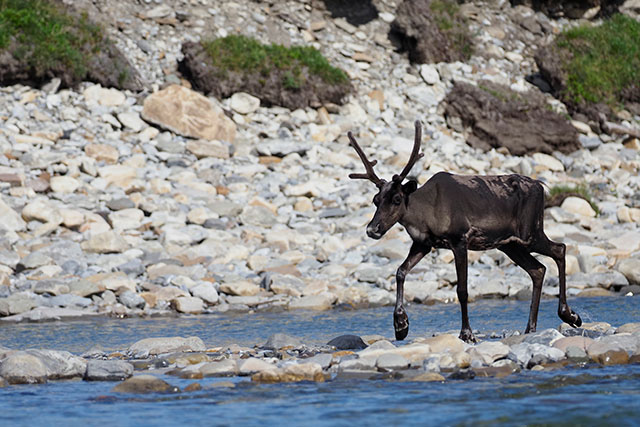
A Porcupine Caribou crosses a river, a common sight during their summer migration across the Arctic tundra. Photo: Jay Frandsen/Parks Canada
Context
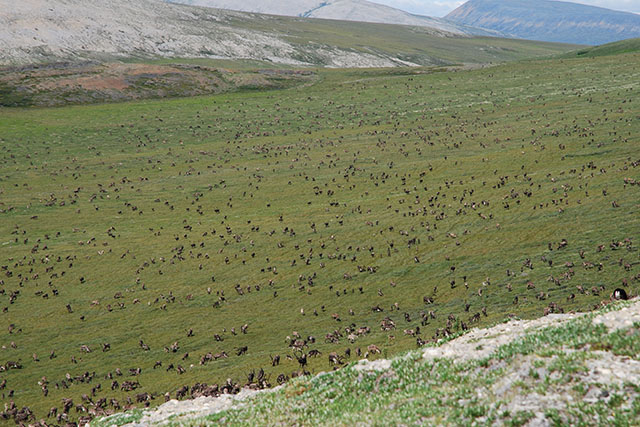
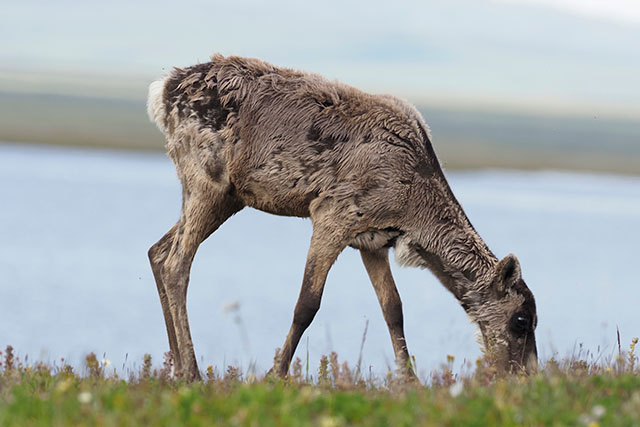
A primary reason for establishing Vuntut National Park was the protection of a sizable portion of the summer range of the Porcupine Caribou Herd. The herd currently numbers more than 200,000 caribou and is one of the largest migratory Barren-ground Caribou herds in Canada.
Summer is a critical period for the Porcupine Caribou Herd. Their summer range provides high-quality forage and places to escape from mosquitoes and other insects. Access to both are linked to improved body condition, higher birth rates, and higher calf and adult female survival.
Understanding the condition of caribou summer range and how it may change with a warming climate is essential for effectively managing the herd. To help achieve this, Parks Canada and the Vuntut Gwitchin First Nation developed the CaribouRANGE project.
Outcomes
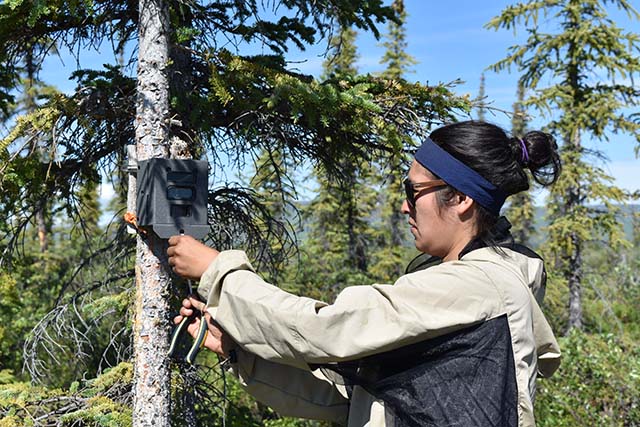
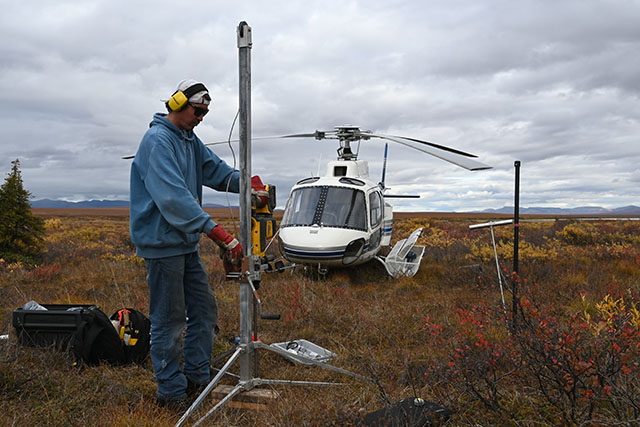
The project established monitoring sites at key locations in Vuntut National Park to measure the snow depth, rainfall, permafrost and soil temperatures, vegetation cover, and the length of both the snow season and growing season. These measurements can warn of significant climate related changes to the herd’s food sources and increased harassment of the herd by insects.
The CaribouRANGE partners shared and discussed five years of results from the project as part of the Vuntut Gwitchin Government Annual Research Gathering and the Porcupine Caribou Herd Knowledge Hub meetings in 2022 and 2023. The outcomes from these discussions, which included First Nation and Inuvialuit Indigenous knowledge, informed the collective understanding of how Porcupine Caribou Herd summer range is changing. An improved understanding of the herd’s summer range will aid the Porcupine Caribou Management Board in making caribou co-management recommendations to First Nation, Inuvialuit, territorial, and federal governments.
“We lived on caribou all our lives – that is why we still depend on caribou today.”—Charlie Thomas, Vuntut Gwitchin First Nation Elder
Video
Watch how Parks Canada, along with the Vuntut Gwitchin First Nation, monitors the Porcupine Caribou herd’s summer habitat.
Transcript
[Soft Happy Music]
The Porcupine Caribou herd is one of the largest barren-ground herds in North America with around 218,000 animals.
Since time immemorial the Vuntut Gwitchin First Nation has relied on caribou for survival.
Most barren-ground caribou herds in Canada are in decline.
Protecting the herd is important to preserving this species.
One reason Vuntut National Park was created is to protect caribou habitat.
The Park is co-managed with Vuntut Gwitchin Government and North Yukon Renewable Resources Council.
Climate change is expected to affect this area creating challenges for caribou.
The herd's summer range is above the Arctic Circle.
This area provides important food sources like leafy shrubs and flowering plants.
Parks Canada monitors the summer range.
The goal is to understand how climate change could affect caribou in the future.
There are 10 monitoring sites in prime caribou habitat.
These sites are remote and can only be accessed by helicopter.
Data loggers and trail cameras measure permafrost temperature.
the length of the snow season
and the vegetation growing season.
This information is used to help make decisions that affect caribou.
Managing the Park relies on Indigenous knowledge and western science.
So the herd is strong in the face of a changing environment.
Working together to build a bright future for caribou.
Like. Comment. Share.
PC.GC.CA/PARKSINSIDER
Special thanks to Marty O’Brien for their collaboration and video footage.
Parks Canada
A message from the Government of Canada
Learn more
- Date modified :